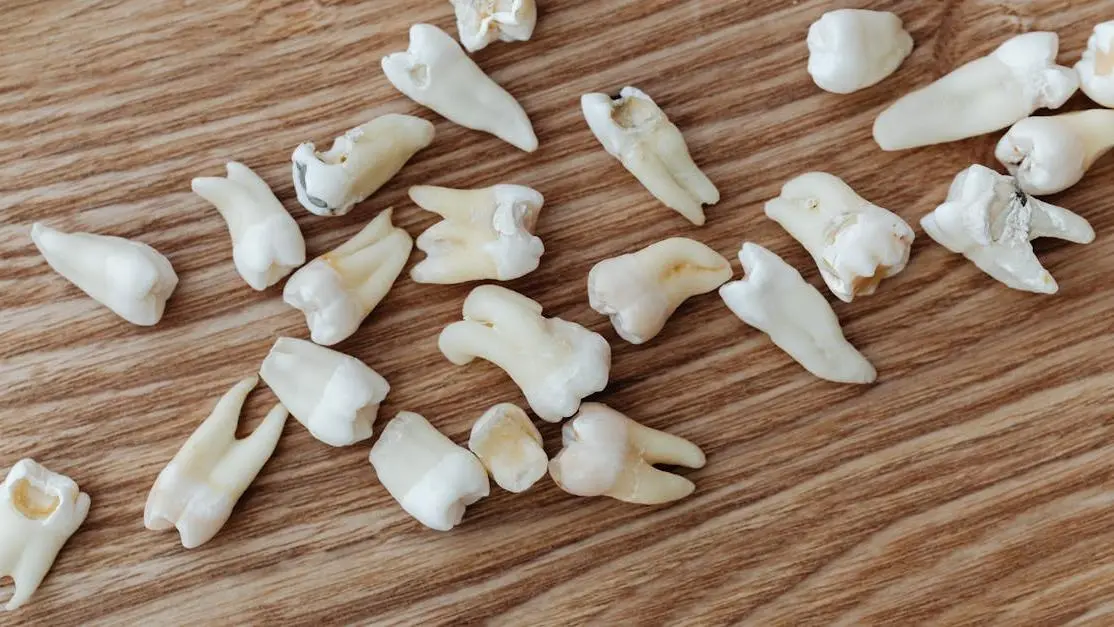An implant-supported bridge vs. traditional bridge—what's the difference? Both aim to replace missing teeth effectively. Traditional bridges use crowns on adjacent teeth as anchors, often leading to pressure on those teeth.
Meanwhile, implant-supported bridges anchor directly to implants in the jaw, preserving surrounding teeth and bone structure. With longer durability and enhanced functionality, they mirror the look and feel of natural teeth. Dive into this article to discover which option aligns with your needs when seeking high-quality, personalized dental care in Cookstown and the surrounding areas.
Understanding Traditional Dental Bridges
When considering options to replace missing teeth, traditional dental bridges often come into play. This solution is time-tested and frequently chosen when an immediate and less invasive approach is desired. Imagine regaining a full set of teeth swiftly and efficiently. That's the promise a traditional bridge offers without the wait of an extensive surgical procedure. But how exactly do these bridges function? Let's break it down.
Mechanics of Traditional Bridges
Traditional dental bridges close the gaps left by missing teeth using neighboring teeth as anchors. Here's a simple breakdown of how they work:
- Pontic Placement: The bridge consists of an artificial tooth, known as a pontic, which fills the space of the missing tooth.
- Support from Adjacent Teeth: Crowns are placed on the teeth adjacent to the gap—these are your anchor points. These crowns provide the necessary support for the bridge.
- Preparation Required: To accommodate crowns, the adjacent teeth need reshaping. This involves removing some enamel, making room for a seamless fit.
Advantages and Considerations
When you choose a traditional bridge, you're opting for:
- Speed and Simplicity: The process is often quicker and less invasive, usually requiring just a couple of dental appointments.
- Immediate Aesthetic Improvement: Restores the appearance of a full set of teeth swiftly.
- Affordability: Lower upfront costs compared to implant-supported solutions.
However, it's essential to be aware of potential downsides, such as:
- Impact on Healthy Teeth: The need to alter healthy adjacent teeth may lead to future issues.
- Longevity Concerns: Typically lasts 5 to 15 years, dependent on your dental hygiene and the condition of the anchor teeth.
Choosing the right option hinges on understanding your unique dental health landscape.
What Is an Implant-Supported Bridge?
For those seeking a more permanent and natural-feeling solution, implant-supported bridges present a compelling alternative. If you’re pondering ways to preserve both function and appearance without compromising adjacent teeth, this option is worth considering.
How Implant-Supported Bridges Work
Implant-supported bridges are anchored directly into the jawbone, offering unparalleled stability and longevity. Here's a closer look:
- Titanium Posts: These act as artificial tooth roots, surgically placed into the jawbone. Over time, they fuse with the bone—a process known as osseointegration—creating a solid foundation.
- Bridge Placement: Once the implants integrate successfully with the jawbone, the bridge, consisting of pontic teeth, is attached securely.
- No Impact on Adjacent Teeth: Unlike traditional bridges, there's no need to alter adjacent healthy teeth, preserving their integrity.
Benefits of Choosing Implants
Choosing implant-supported options offers numerous advantages:
- Durability: They're designed to last a lifetime with proper care, offering an excellent long-term investment.
- Bone Health Preservation: Implants maintain jawbone density, which is crucial in preventing facial changes that can occur with bone loss.
- Natural Feel and Functionality: These bridges mimic the sensation of natural teeth, enhancing comfort in daily activities.
While the surgical aspect of such procedures involves a longer journey, the result is a durable, natural-feeling dental solution that truly pays off over time.
Benefits of Implant-Supported Bridges
Let's face it: when it comes to dental care, we aim for solutions that feel as natural and comfortable as possible. Implant-supported bridges achieve this and much more. By choosing this option, you’re opting for a solution that stands the test of time while looking and feeling just like natural teeth.
Benefits You Can Count On
- Strong and Stable Base: Implants provide a robust foundation, ensuring the bridge stays secure even during regular activities like eating and speaking.
- Protect Jaw Health: They actively prevent the deterioration of the jawbone, which often happens when teeth are missing.
- Enhanced Aesthetics and Comfort: With implant bridges, you experience a seamless, natural look and feel in your mouth.
By investing in implant-supported bridges, you're taking a proactive step toward maintaining long-term dental health and overall well-being.
For those considering the journey to an implant-supported solution, the true reward lies in the comfort and confidence it brings.
Comparing Costs and Longevity
Now, let's tackle the practicalities—costs and longevity. It's natural to weigh your options in terms of expenses and the lifespan of the chosen treatment. It's about making an informed choice that best serves your financial and health-related goals.
Financial and Durability Insights
- Upfront Investment vs. Long-Term Savings: Implant-supported bridges may require a higher initial investment. However, their durability means fewer replacements and, ultimately, long-term savings.
- Traditional Bridges and Their Unequaled Speed: Initial costs are lower, making them more accessible immediately, but they tend to require more frequent replacements.
- Insurance Coverage: Checking your coverage is key. While some plans may offer different levels of reimbursement, others might cover only portions of these procedures.
By understanding these factors, you can better align your dental health strategy with your long-term vision, ensuring that the choice you make supports not only your budget but also your lifestyle aspirations.
Procedural Differences and Recovery
Understanding the procedural aspects of traditional and implant-supported bridges is critical when considering which route to take. It’s not only about the end result but also the journey there. Let's break down what each procedure entails, along with their recovery processes, to give you a clear picture of what to expect.
Traditional Bridge Procedure
Traditional bridges are generally quicker and less invasive. Here's what the process involves:
- Initial Assessment and Preparation: We assess the alignment and health of the surrounding teeth. Prepping involves reshaping the adjacent teeth to fit crowns, ensuring they support the bridge effectively.
- Impressions and Fittings: Dental impressions are taken to create a custom bridge that fits perfectly.
- Final Placement: A second appointment sees your bridge securely anchored in place, often taking just a few weeks from start to finish.
Implant-Supported Bridge Procedure
Implant-supported bridges require more detailed planning and a longer timeline but pay off with superior stability and durability:
- Surgical Placement of Implants: Titanium posts act as roots, placed into the jawbone. This surgical phase is essential for the bridge’s robust support structure.
- Osseointegration Period: Following surgery, several months are dedicated to healing, allowing the implants to fuse with your jawbone. This period ensures the stability necessary for the bridge.
- Final Restoration: Once healed, the custom bridge is attached to the implants.
Recovery Insights
- Traditional Bridges: Recovery is swift, with minor post-procedural sensitivity, typically managed with regular pain relief methods. You resume normal activities almost immediately.
- Implant-Supported Bridges: Recovery can be longer due to the surgical nature of the procedure. It may include some discomfort and dietary adjustments, but we’re here to support you every step of the way to ensure a smooth transition back to your daily life.
Patient Success Stories
At Cookstown Dental, countless patients have embraced life-changing transformations through implant-supported bridges. These stories aren’t just about replacing teeth; they’re about reclaiming confidence and quality of life.
Real-Life Transformations
- Restored Confidence: One patient, struggling with the lasting impact of a failing traditional bridge, opted for implantation. Within months of the procedure, they were not only smiling brighter but also expressing greater confidence at social gatherings.
- Improved Functionality: Another case involved a patient who faced difficulties with eating certain foods. Post-implant, they reported enjoying meals without fear of discomfort or instability.
- Aesthetic Satisfaction: A satisfied patient remarked on how natural and aesthetically pleasing their new smile appeared, leading to frequent compliments and boosted self-esteem.
These stories of success highlight the transformative potential of implant-supported bridges. Your smile deserves to shine with confidence, and these solutions offer just that.
Who Is a Candidate?
Determining the right candidate for each type of bridge involves evaluating dental health, lifestyle, and personal preferences. Let’s examine who might benefit from each option.
Ideal Candidates for Traditional Bridges
- Rapid Solution Seekers: Ideal if you’re looking for a quick and less invasive option.
- Good Oral Health: You should have healthy adjacent teeth to support the bridge.
- Budget Considerations: Initial costs are often less, which may favor immediate financial situations.
Ideal Candidates for Implant-Supported Bridges
- Optimal Jaw Health: Candidates must have sufficient jawbone density, or be open to bone grafting if needed.
- Long-Term Thinking: Suited for those who wish to invest in a lasting, secure solution that mimics natural teeth closely.
- General Health: Non-smokers with good overall health make the best candidates, as these factors support effective healing and integration.
Making the right choice means considering these aspects carefully. We’re here to guide you through every step, ensuring your choice aligns with your goals and lifestyle.
Conclusion
Both traditional and implant-supported bridges provide effective solutions for replacing missing teeth, each with unique benefits and considerations. By weighing costs, procedural differences, and personal health, you can make an informed decision that enhances both comfort and confidence in your smile. At Cookstown Dental, we prioritize delivering not just solutions, but experiences centered on compassion and expertise. Ready to explore your options? Reach out and take the first step toward a healthier, brighter smile.

